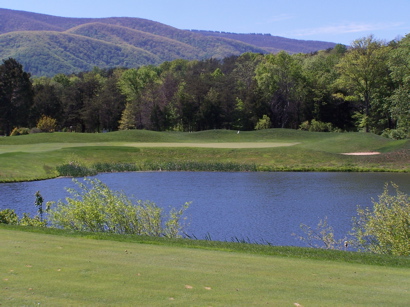
At The Landings, traffic jams involve golf carts more often than they do cars. Many golfers own their own carts to drive to one of the six golf courses they belong to.
Tip #2: You can gorge on lots of golf, but you will pay for it
Are you a gourmet or gourmand golfer? The gourmet golfer dines, metaphorically speaking, at only the finest courses. He or she avoids play at Muni Golf Club and saves up his green fees for Kiawah’s Ocean Course or Bandon Dunes. If he is a private club member, he makes his choice based on layout and amenities, and maybe how many friends and business colleagues belong. But he chooses a course that will not bore him over repeated plays.
The gourmand is more like the rest of us, ready to confront the grand
When you go looking for a place to live on or near a golf course, you will do well to understand which type of golfer you are. Doing so will save you money and add immeasurably to your experience. Some golf communities offer multiple golf courses, but you have to ask yourself if you will really play four or six courses often enough to justify the higher club membership prices. In multi-course communities I’ve visited, members develop their favorite and tend to play one or two of them more regularly than they do the others. And without being a snob about the issue, I have also observed that the lower handicap golfers tend to gravitate toward the best one or two courses, and the higher handicappers tend to play wherever a tee time is available.
For the golfing gourmet, the best option may not be a community golf course at all, but rather an outstanding private golf course within a few minutes drive of their home. This approach gives a little more leeway to handpick the course and the type of members. Near most towns, like Greenville, SC, or Charlottesville, VA,
There are dozens of multi-course communities to choose from in the southern U.S. One I particularly like for its unpretentiousness and carefully thought out array of golf courses is The Landings on Skidaway Island, just outside Savannah. I have written about the community a number of times, and good friends recently purchased a home behind a green at one of the six courses there. The challenging Arthur Hills Palmetto course at The Landings is one of the best I have played in the last decade, in nice condition and with impressive marsh views. I played one of the other courses there, a Tom Fazio layout that was mild in comparison but in even better condition. Unlike a community like The Cliffs, where its six courses are spread across the Carolina mountains, about one hour apart at their most distant, The Landings courses are less than five minutes apart. (Note: Many residents own their own golf carts and travel to the courses that way.) Moreover, Cliffs membership is $150,000 whereas The Landings has held the line at $50,000.
Another multi-course option, a bit unconventional in my estimation, is the Wintergreen Resort in Virginia, which offers the double-dip of golf and skiing. The Ellis Maples designed Devils Knob course at the top of the mountain closes for the winter, its first tee not 200 yards from the resort’s ski lift. In summer, the temperatures at Devil’s Knob, which is the highest altitude course in Virginia at 3,850 feet, can be as much as 18 degrees cooler than at the 27-hole Stoney Creek course at the base of the mountain. Stoney Creek, a pleasing layout designed by Rees Jones, remains open throughout the winter and locals brag that on some January days they have skied in the morning and played golf in the afternoon. Because it is a full-service resort and residential community, there are no shortages of activities, and the university town of Charlottesville (U of Virginia) is just 40 minutes away.
The coastal area of North Carolina, between Myrtle Beach and Wilmington, is dotted with multi-course communities, including the plantations of Sea Trail, Ocean Ridge and St. James. I have played golf at all of them and can testify that they have enough in the way of challenge and variety to satisfy the most ravenous golfing gourmand. The scant few miles to the beach will also impress beach goers who need the occasional respite from golf (or from their golf addict spouse).
No matter your golfing “diet,” I would be happy to help you develop some ideas about what community or golf-rich area might suit you best. There is never a fee or obligation whatsoever for my services. Just send me a note (click the contact button at the top of the page) and I will get back in touch with you promptly.

The Rees Jones designed Stoney Creek at Virginia's Wintergreen Resort is open year round. Some ski in the morning at the top of the mountain and golf in the afternoon in January.























